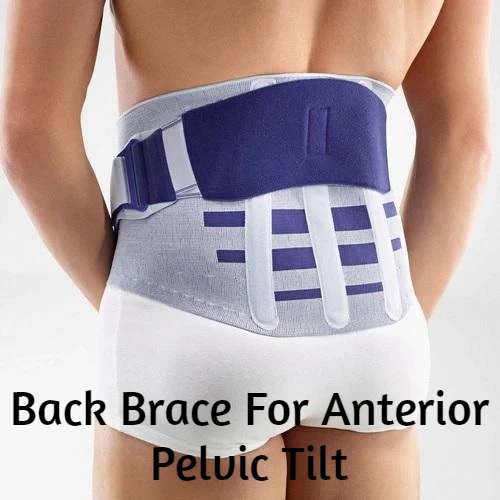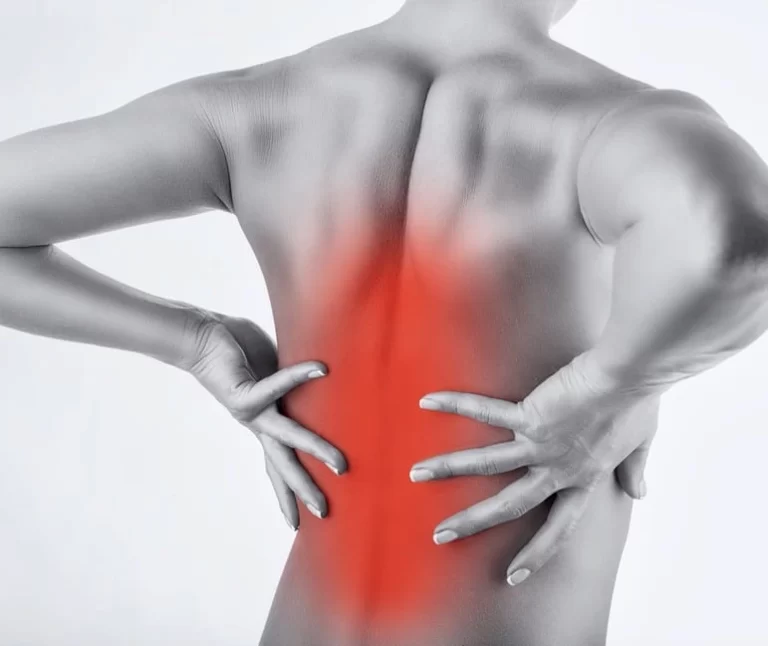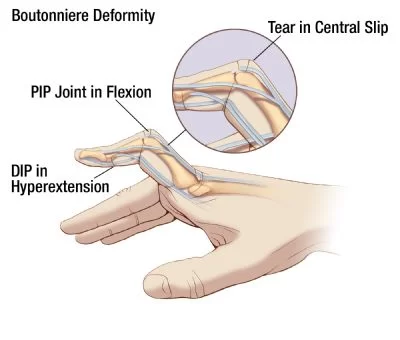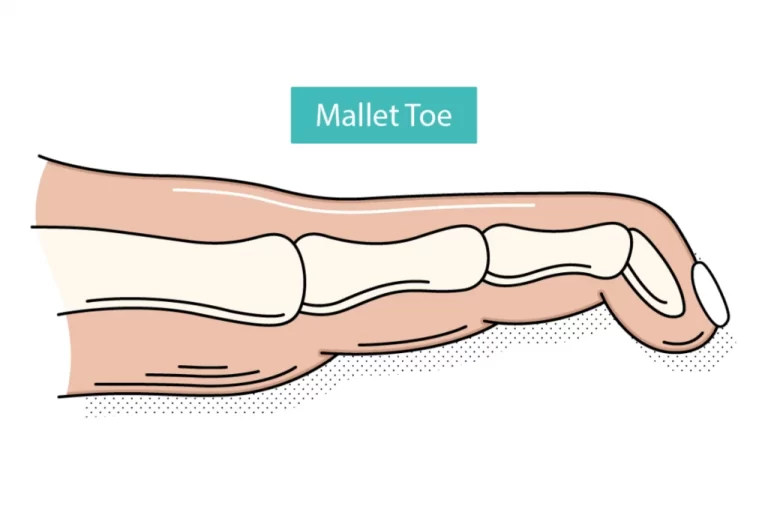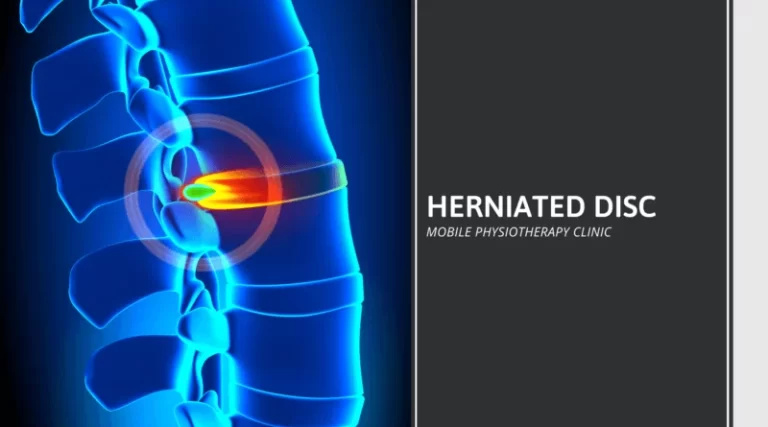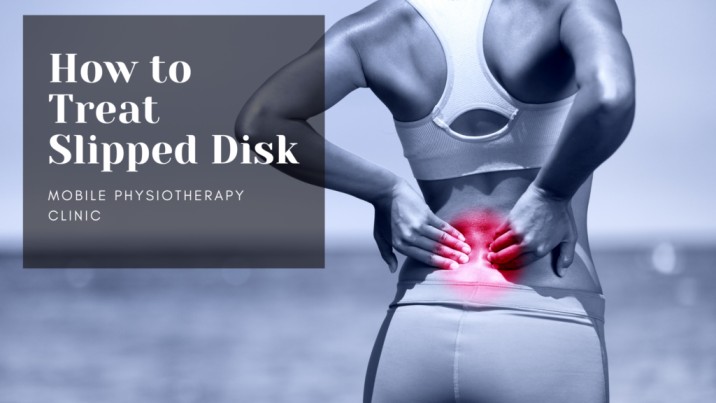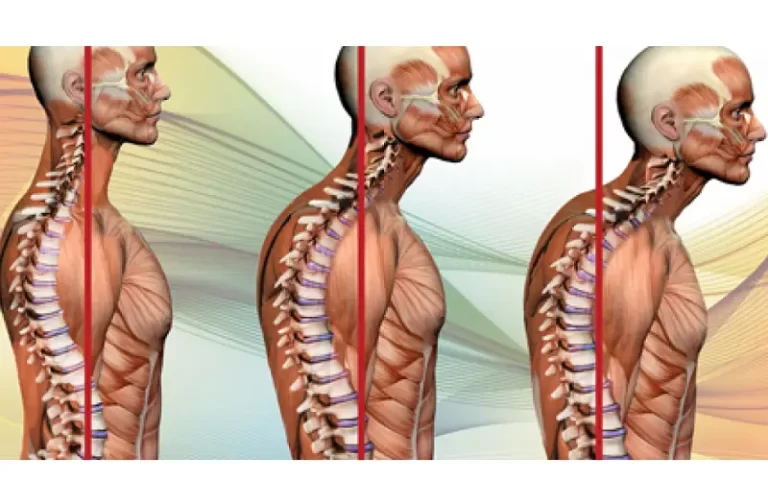Back Brace For Anterior Pelvic Tilt
Introduction
Although a back brace for anterior pelvic tilt may not directly address anterior pelvic tilt (APT), some people feel that it helps by supporting better posture and offering support, both of which can aid with APT indirectly.
It’s crucial to remember that treating APT may require more than just a back brace; a whole strategy that includes workouts and lifestyle modifications is usually advised.
Here are some pointers:
Speak with a Healthcare Professional:
It’s important to speak with a healthcare provider, such as an orthopedic physician or physical therapist, prior to beginning any new workout regimen or utilizing any kind of back brace. They are able to evaluate your particular circumstance and make tailored advice.
Strengthen Core Muscles:
Weak core muscles are frequently linked to APT. Pelvic alignment can be improved using exercises that target the glutes, lower back, and abdominal muscles for strength. Incorporate exercises like leg lifts, planks, and bridges into your program.
Release Tensed Muscles:
Tight lower back and hip flexors are frequently present with APT. These muscles can be stretched to increase flexibility and relieve tension. Stretches for the hamstrings, lower back, and hip flexors should be included.
Awareness of Posture:
Pay focus to your posture the entire day. Avoid slouching when you sit or stand; instead, keep your shoulders back. While a brace might serve as a helpful reminder for proper posture, it shouldn’t be your only source of support.
Ergonomic Adjustments:
To encourage proper posture, modify your daily routine or workspace. This can entail taking frequent breaks to stand and stretch, utilizing a supportive chair, and setting your computer monitor at eye level.
Frequent Workout:
Increase your level of general physical exercise to strengthen and stretch your muscles. Walking and swimming are examples of cardiovascular exercises that can improve general health.
When to Use a Back Brace:
Select a back brace that is intended to support your posture if you choose to use one. Use the brace in conjunction with a comprehensive program that includes lifestyle modifications and exercises, rather than relying just on it. Make sure you adhere to the brace’s recommendations.
Recall that every instance is unique, so what suits one person might not suit another. APT must be addressed with a mix of strengthening, stretching, and lifestyle modifications. Speaking with a healthcare provider is essential to creating a customized approach that is suited to your
Benefits of Wearing an Anterior Pelvic Tilt Back Brace
- You may be familiar with anterior pelvic tilt, a common postural problem that can cause discomfort and even injury if you experience persistent hip or lower back pain.
- Thankfully, you can reduce pain and straighten your posture by using an anterior pelvic tilt brace.
- Let’s examine anterior pelvic tilt in more detail, including its effects on the body and the advantages of using an anterior pelvic tilt brace.
- Individuals with APT-related problems may benefit from wearing an anterior pelvic tilt (APT) brace.
- It’s crucial to remember that each person will respond differently to a brace, so wearing one should be a part of a holistic strategy that also includes workouts and lifestyle changes. Wearing an APT brace may have the following possible advantages:
Supporting posture:
An improved, more neutral posture can be maintained with the help of APT braces, which are made to support the lower back and pelvis. People who have bad posture or a tendency to slump may find this very helpful.
Reduced Pain in the Lower Back:
Lower back pain and APT are frequently linked. A brace could help reduce some of the discomfort related to APT by supporting the spine and encouraging good alignment.
Awareness of Muscles:
Your awareness of your pelvic position and your desire to use your core muscles can both be enhanced by wearing a brace. In due course, improved postural habits may result from this increased awareness.
Support During the Rehab Process:
A brace could offer extra support to people receiving physical therapy or rehabilitation for APT while they heal. During the process of strengthening and stretching the muscles, it might help to maintain good alignment.
A Gentle Reminder About Posture:
A brace can serve as a helpful reminder to keep proper posture all day. This continuous feedback could aid in breaking bad habits like hunching over or sitting in awkward positions that lead to APT.
Temporary Relief:
APT symptoms may be momentarily alleviated by wearing a brace, especially during times of significant pain or discomfort. On its own, though, it is not a permanent fix.
Better Capabilities:
Some people may find that wearing a brace helps them conduct daily chores more easily since it lessens the pain and discomfort that come with APT. Better general functionality and quality of life may result from this.
- It’s crucial to wear an APT brace under the supervision of a medical specialist, such as an orthopedic physician or physical therapist.
- Furthermore, even while a brace might be a useful tool, it shouldn’t take the place of other crucial APT treatment techniques including stretching, focused exercises, and lifestyle changes.
- Braces can be experienced differently by each person, and what works well for one may not be as beneficial for another.
- Always seek medical advice to decide the best course of action for your unique needs and condition.
How Does Anterior Pelvic Tilt Affect Your Body and What Does It Mean?
- A structural problem called anterior pelvic tilt happens when your lower back arches excessively and your pelvis tilts forward in front of you.
- As a result, your hip flexors and lower back muscles may tighten and your abs and glutes may atrophy.
- This might cause you to appear leaned and cause pain, discomfort, or tightness in your legs, hips, and lower back.
- Any age or level of fitness can be affected by anterior pelvic tilt, but those with weak core muscles or those who spend a lot of time sitting down are more likely to experience it.
- Exercises that target the glutes and core while extending the hip flexors and lower back muscles can help with anterior pelvic tilt.
- Planks, bridges, lunges, and hip flexor stretches are a few of these workouts. Additionally, it’s critical to keep proper posture the entire day, particularly when seated for extended periods of time.
- You can enhance your overall physical performance, lessen pain and discomfort, and improve your posture by treating anterior pelvic tilt.
How Pain Can Be Reduced with an Anterior Pelvic Tilt Brace
- A specialized tool called an anterior pelvic tilt brace is made to support your pelvis and lower back.
- It helps realign your pelvis into a more neutral position by applying light pressure to specific lower back locations.
- This can ease discomfort, ease tense muscles, and enhance your posture in general. Users of anterior pelvic tilt braces frequently report feeling more at ease when walking, standing, and sitting.
- Wearing a pelvic tilt brace can help you live a more active, pain-free life by treating the underlying source of your pain.
- It is crucial to remember that an anterior pelvic tilt brace should only be utilized in addition to other therapeutic methods like physical therapy and exercise.
- The brace alone is not a long-term solution, even though it can offer some momentary relief.
- Furthermore, since not everyone is a good candidate for an anterior pelvic tilt brace, it is crucial to speak with a healthcare provider before utilizing one.
- However, when used correctly and under supervision, an anterior pelvic tilt brace can be an effective tool for treating lower back pain and enhancing quality of life in general.
An Overview of the Science The Foundation of Anterior Pelvic Tilt Braces
- Numerous scientific investigations have shown that anterior pelvic tilt braces are beneficial.
- For instance, a 2017 study indicated that wearing an anterior pelvic tilt brace helped those with mild to moderate anterior pelvic tilt improve their posture and experience lower back discomfort. The Journal of Back and Musculoskeletal Rehabilitation published the study.
- Another study that was published in the International Journal of Sports Physical Therapy found that when performing specific exercises, wearing a pelvic tilt brace enhanced the activation of the gluteal muscles and decreased the activation of the hip flexors.
- These results imply that anyone wishing to reduce discomfort and improve posture may find an anterior pelvic tilt brace to be a useful tool.
- While anterior pelvic tilt braces might be helpful, it’s vital to remember that they shouldn’t be the only option for improving posture and easing pain.
- It is advised to include stretches and workouts that focus on the hip flexors and lower back muscles, two muscles that are implicated in anterior pelvic tilt.
- A physical therapist or another healthcare provider can also offer specific guidance on how to treat anterior pelvic tilt and enhance general posture and musculoskeletal health.
Who Can Get Benefit From Wearing An Anterior Pelvic Tilt Brace?
- Anyone experiencing hip or lower back pain associated with anterior pelvic tilt may find relief with an anterior pelvic tilt brace.
- It can also assist in maintaining proper posture throughout the day, which can be beneficial for those with weak core muscles or those who spend a lot of time sitting down.
- The inclusion of an anterior pelvic tilt brace to your self-care regimen can be beneficial for anyone, be they an athlete seeking to improve performance or an average person looking for greater comfort in their everyday activities.
- Pregnant women may also benefit from wearing an anterior pelvic tilt brace. The body’s weight distribution varies as the baby grows, which may cause lower back pain and an anterior pelvic tilt.
- During pregnancy, wearing a brace can ease discomfort and support the pelvis.
Choosing the Best Anterior Pelvic Tilt Brace Based on Your Needs
- There are two types of back brace available in the store
- It’s critical to select an anterior pelvic tilt brace that fits comfortably and offers the appropriate amount of support.
- To guarantee a tight fit, look for a brace with adjustable straps or sizing options, as well as one constructed of premium materials.
- To make sure that the brace is comfortable to wear for extended periods of time, you might also want to take elements like breathability and moisture-wicking qualities into consideration.
- See your physician or physical therapist for advice on the best brace to fit your individual requirements.
- It’s crucial to remember that not every anterior pelvic tilt brace is made equally.
- While certain braces might be more suited for daily usage, others might be made for particular sports like weightlifting or jogging.
- Furthermore, whilst certain braces may be more flexible and allow for a greater range of motion, others may provide more stiff support.
- When selecting a brace, take your lifestyle and unique needs into account. If you have any questions, don’t be afraid to consult a medical practitioner.
BraceAbility Anterior Pelvic Tilt Brace: Rotated Hip Posture Alignment Correction Belt for Posterior Pregnancy SPD Management, Lower Crossed Syndrome Support, and Tilted or Twisted Pelvis Girdle Pain.

- Most adult men and women can wear a universal pelvic belt; to ensure that this brace will fit you, measure your waist using a flexible tape measure and consult the sizing table shown above.
- Wearing this brace for anterior or lateral pelvic tilt and general pelvic posture correction will assist cure your misaligned pelvis and help fix and correct hip and pelvis posture following an injury, pregnancy, or other problems.
- A discreet, lightweight pelvic support belt is ideal for use and relief during the day when working, walking, exercising, or sitting; Wear comfortably during the day or while sleeping throughout the night, either under or above your shirt.
- A pelvic binder is constructed from long-lasting, medical-grade materials, and because of its adjustable design, you can wear it both during pregnancy and the postpartum recovery period.
- Easy, affordable solution for pelvic floor discomfort, twisted pelvis, lower crossing syndrome, tilted hip pain, and Donald Duck syndrome; just tighten the belt to the ideal compression level for maximum comfort as you recover.

How to Properly and Safely Wear an Anterior Pelvic Tilt Brace
- To guarantee that your anterior pelvic tilt brace is offering the best support and alignment possible, it is imperative that you wear it appropriately.
- To ensure that the brace fits securely around your lower back and pelvis, start by adjusting the straps.
- The brace should not feel constrictive, but rather supportive. Make sure you wear your brace for brief periods of time initially, and then as your body adjusts, progressively extend its use.
- When experiencing pain or discomfort, don’t forget to take off the brace and always follow the care and maintenance guidelines provided by the manufacturer.
- It’s crucial to remember that appropriate exercise and physical treatment cannot be replaced with an anterior pelvic tilt brace.
- It’s important to address the underlying muscular imbalances and postural problems that are producing the anterior pelvic tilt, even though the brace can offer momentary respite and support.
- To create a thorough treatment plan that incorporates stretches and exercises to strengthen your core muscles and correct your posture, speak with a physical therapist or other healthcare professional.
- It’s also critical to select the appropriate brace type for your individual needs. Anterior pelvic tilt braces come in a variety of forms, including flexible and rigid varieties.
- Finding the right brace for your condition and lifestyle might be aided by a healthcare professional.
- To prevent any discomfort or skin irritation, it’s also critical to make sure the brace is fitted correctly and composed of high-quality materials.
Does Wearing an Anterior Pelvic Tilt Brace Have Any Side Effects?
- An anterior pelvic tilt brace is generally safe to wear and has no negative side effects. The brace’s edges may cause slight skin irritation or discomfort in certain persons, but this is usually fixable by changing the brace’s fit or by putting a thin undershirt underneath it.
- Talk to your physician or physical therapist if you feel any pain or discomfort when wearing your brace.
- It’s crucial to remember that appropriate exercise and physical treatment should always come first when using an anterior pelvic tilt brace.
- Even while the brace can offer momentary support and relief, it’s crucial to treat the underlying reasons for anterior pelvic tilt with certain stretches and exercises.
- The finest exercises to include in your program can be advised by your physical therapist or doctor.
- It’s also critical that you wear the brace in accordance with your doctor’s instructions. In fact, using the brace too regularly or for too long can exacerbate your illness and cause atrophy or weakness in your muscles.
- As your condition improves, be sure to progressively reduce your reliance on the brace and stick to the prescribed wearing schedule.
For Best Results, Use an Anterior Pelvic Tilt Brace along with Physical Therapy
- An anterior pelvic tilt brace can be a useful treatment for anterior pelvic tilt on its own, but for best results, it can also be used in conjunction with physical therapy.
- To strengthen your core muscles and correct your posture, a licensed physical therapist can assist you in creating a customized workout program.
- They can also teach you how to stretch and massage yourself to release tight muscles and avoid getting hurt.
- Physical therapy and an anterior pelvic tilt brace can help you treat the underlying reasons for your discomfort and enhance your general health and well-being.
- Physical therapy can also assist you in addressing any underlying problems, such as muscle imbalances or joint stiffness, that might be causing your anterior pelvic tilt.
- Together, you and your physical therapist can determine these problems and create a plan of care to deal with them.
- You may be able to get long-term pain and discomfort alleviation by doing this.
- It’s crucial to remember that using an anterior pelvic tilt brace along with physical therapy should never be done without the supervision of a qualified medical expert.
- They can verify that your exercise regimen is both safe and efficient, as well as that you are employing the brace appropriately.
- Combining these two treatments will help you get the best possible outcomes and raise your standard of living if done properly.
Success Stories from Real People Who Wore Anterior Pelvic Tilt Braces
- The use of anterior pelvic tilt braces has benefitted a great deal of people. The testimonials from people who have used an anterior pelvic tilt brace are encouraging, whether it is for better posture, greater sports performance, or pain alleviation from chronic conditions.
- One person reported that the brace improved their technique when squatting in the gym and totally eliminated their lower back ache while they were seated at work.
- Another person said that after using a brace continuously for several weeks, they were able to walk farther without experiencing any pain.
- An anterior pelvic tilt brace can have a variety of positive effects, some of which are life-changing.
- It’s crucial to understand that there isn’t a single anterior pelvic tilt brace that works for everyone.
- In order to ensure optimal fit and usage of an anterior pelvic tilt brace, it is advised that individuals seek advice from a healthcare practitioner.
- The benefits of wearing a brace can also be increased by including stretches and exercises to strengthen the muscles surrounding the pelvis.
- An anterior pelvic tilt brace can be a useful aid in enhancing pelvic health and function when used properly.
Conclusion
Anyone wishing to live a more active, healthier life, reduce discomfort, and improve their posture will benefit greatly from using an anterior pelvic tilt brace. You can decide if anterior pelvic tilt is the best course of action for you by being aware of the science of anterior pelvic tilt and how an anterior pelvic tilt brace functions.
To guarantee the best outcomes, don’t forget to speak with your physician or physical therapist and select a premium brace that fits correctly. An anterior pelvic tilt brace can improve your quality of life and make you feel better whether you have an anterior pelvic tilt or not. This is true for office workers, athletes, and other people.
It is crucial to remember that although an anterior pelvic tilt brace might be useful in enhancing posture and minimizing discomfort, it shouldn’t be the only treatment option. To treat the underlying source of the problem, it can also be helpful to include stretches and exercises that target the muscles that produce anterior pelvic tilt, such as the lower back and hip flexors.
A healthy weight and avoiding extended sitting times can also help stop anterior pelvic tilt from developing or getting worse. People can improve their posture and general health over
FAQs
Is anterior pelvic tilt correctable with a brace?
For people who suffer from anterior pelvic tilt, poor posture, and other conditions, wearing a pelvic support belt can be extremely relieving and stable.
What is the quickest approach to correct pelvic tilt anteriorly?
The following actions can also help someone rectify an anterior pelvic tilt:
at work, utilizing a standing desk.
Should you spend a lot of time sitting down, consider stretching and getting up periodically.
Steer clear of high heels.
seeing a podiatrist about insoles or foot exercises
Is the anterior pelvic tilt irreversible?
Fortunately, APT is quite easily fixed. In addition to walking more and avoiding high heels, there are a number of anterior pelvic tilt exercises that can help you strengthen your core and posterior chain and release tension in your hip flexors.
Do pelvic braces work?
Conclusions. Pelvic belts are thought to reduce SIJ-related pain and enhance health-related quality of life. Patients’ rectus femoris activity is reduced when wearing a belt, and their postural stability is enhanced when moving.
References
- The Benefits Of Wearing An Anterior Pelvic Tilt Brace | Allo Health. (2023, July 15). Allo Health – Better Sex, Backed by Science. https://www.allohealth.care/healthfeed/sexual-wellness/anterior-pelvic-tilt-brace

